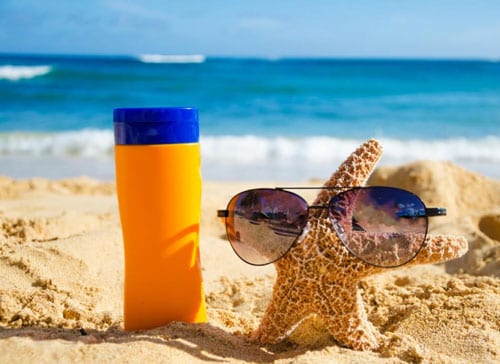Reef Safe Sunscreen to Use on your Four Winds Snorkel Tour – All You Need to Know

Reef safe sunscreen in Hawaii is all the rage these days and in case you are wondering what the hype is all about, you’ll probably be interested in taking a deeper look at where it all started from.
It is simply stating the obvious to say that Hawaii enjoys worldwide fame for being a popular tourist destination. One peek outside the window as the airplane starts descending towards the green patches located amidst the vast blue sea or even a quick online search about the island will give you a revealing glimpse into what makes these isolated land masses the most incredible and stunning place on this earth.
Renowned for its beautiful shores lined with sparkling water, sun-kissed warm white sands, and lush green flora inhabited by diverse species of exotic wildlife, the Hawaiian islands are really unlike any other place in this world.
Prized for their scenic beauty, these islands attract travelers from all walks of life to experience a truly unforgettable holiday in a tropical region. Visitors love to witness the picturesque surroundings, swim in the cool blue water, hike the diverse landscapes, and do a ton of other activities that can hardly be enjoyed anywhere else.
However, as you gear up to dive underwater, hop on snorkel tour to Molokini Crater or lie down on the beach to soak up the soothing sunlight, there is a bitter side of tourism that you might overlook or perhaps aren’t even aware of in the first place.
Suncreens are not good?
Think about what you would typically do when heading out to the beach or for any other outdoor activity while you are on the island. You would probably slather a generous amount of sunscreen all over your body to protect your skin from the harmful ultraviolet rays, right? But the next time you dive below the water surface after applying sunscreen, you must also think about the hundreds of potentially dangerous chemicals that also make their way into the ocean simultaneously.
Reef Safe Sunscreens – Protecting the World’s Coral Reefs
Hawaii reef safe sunscreens were introduced in an attempt to curb the harmful effects of the chemicals present in regular skin care products. In fact, with the announcement in July last year, Hawaii became the first US state to ban the sale of sunscreens that contain coral-harming compounds. This new law will be officially effective from January 1, 2021, but locals and tourists alike are already discarding the old products and making a quick transition towards sunscreen products that are completely safe for the exclusive creatures living underwater.
What Is Reef Safe Sunscreen?
Reef safe sunscreens are like any other sunscreen in the sense that they protect your skin from sunburns and skin cancer caused by exposure to UV rays. But what really sets these sun protective products apart from the hundreds of beauty products lining the shelves at most commercial stores is the fact that reef safe sunscreens are free of chemicals that can be toxic for the corals that live under the cool blue waters of Hawaii.
What Makes Sunscreens Reef Safe?
The reason why traditional sun protective products are dangerous for the aquatic life is the fact that these skin care items usually contain oxybenzone and octinoxate – the two main ingredients that contribute to coral bleaching in different regions.
The latest ‘reef-friendly’ sunscreens get their name because they bypass the use of these major coral-damaging chemicals and therefore, help keep the reefs out of harm’s way.
What Sunscreens Are Reef Safe?
Eager to preserve the exquisite sea creatures that corals truly are, many small-scale local businesses in Hawaii are working hard to ensure that the conventional products are eliminated and only reef friendly products dominate the market. Many different brands are available in local stores so if you have trouble deciding which one is the best, check if it is free from the following harmful substances.
- Petrolatum – most mineral sunscreens contain petrolatum, commonly known as mineral oil. Petrolatum takes several years to biodegrade and therefore, is considered unsafe for marine life.
- Titanium dioxide – this compound reacts with water to form hydrogen peroxide which harms not just the corals but all other sea creatures as well.
Most zinc sunscreens that are based on a non-nano zinc oxide formula are considered safe for the environment. Another thing that you must be mindful of when buying your next bottle of sunscreen is the SPF number. Higher SPF means a higher percentage of chemicals which in turn means a greater impact on the environment.
The Threat to the Hawaiian Coral Reefs
Based on a report by Marine Life, an NGO dedicated to marine conservation, over 80,000 types of chemical substances from skincare products have mixed with seawater in various parts of the world – and sunscreen products are one of the primary contributors to this seawater pollution.
According to a survey conducted in 2015, approximately 14,000 tons of sunscreen have leached into the oceans where they harm coral reefs as well as other aquatic species.
More than 80% of the coral reefs in the Caribbean have perished due to disturbances in the water composition and given the flourishing tourism industry on the island, the Hawaiian reefs might suffer the same fate unless proper measures are taken to prevent further leaching of sunscreen chemicals into the ocean.
Hawaii is, without a doubt, the ultimate place to have the most fun-filled holiday ever. So, let’s take a step towards ensuring that the beauty of this island is preserved for future generations to enjoy as well.